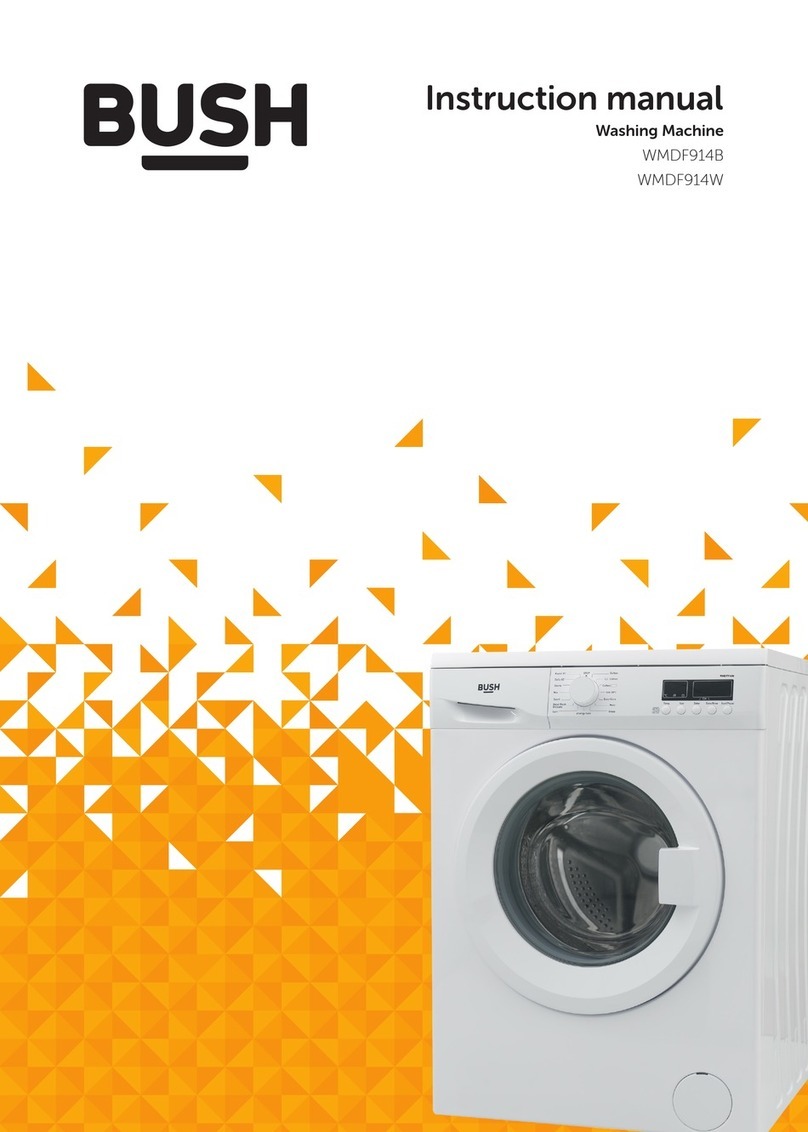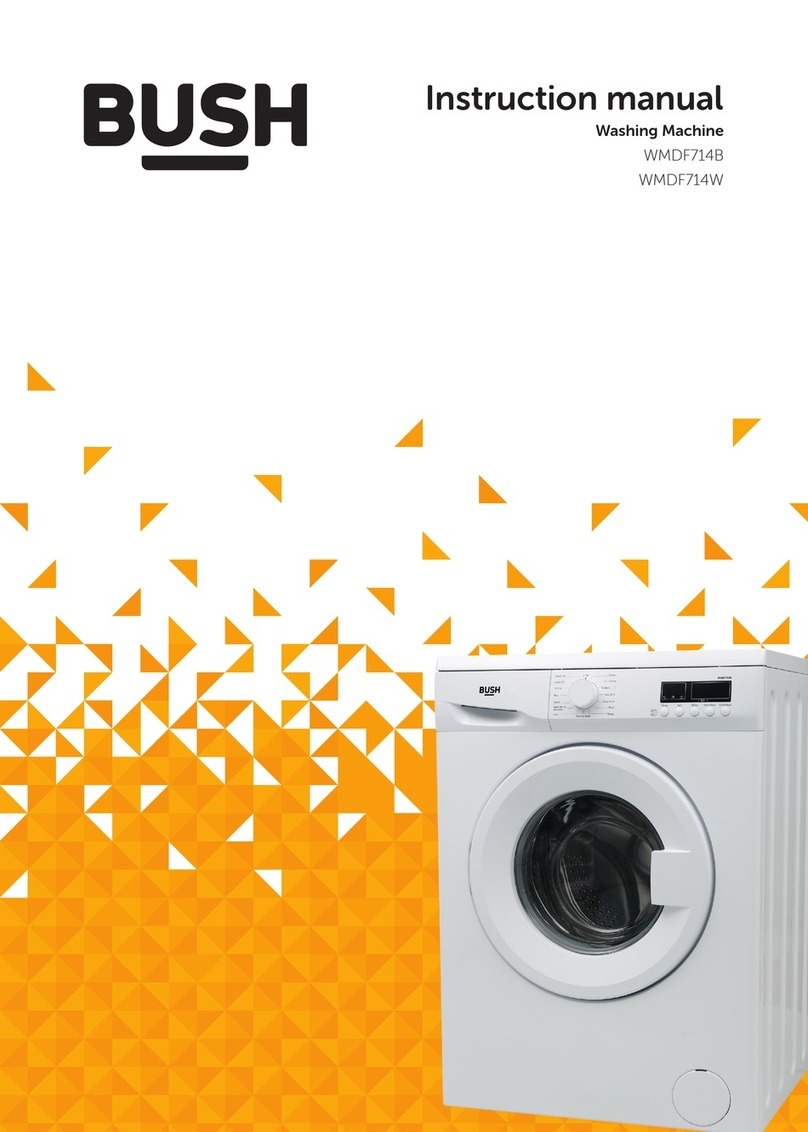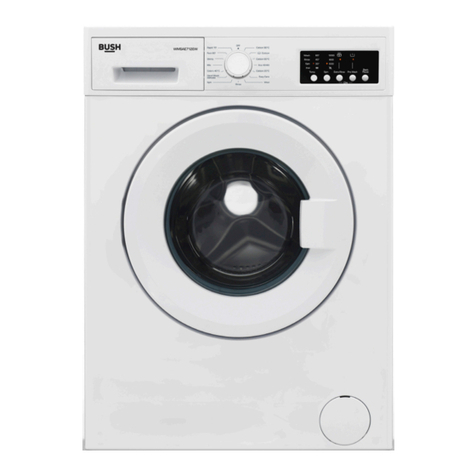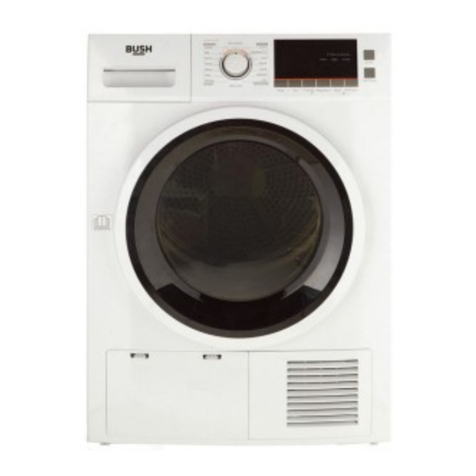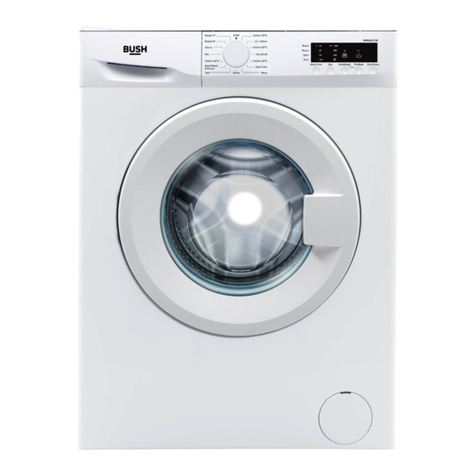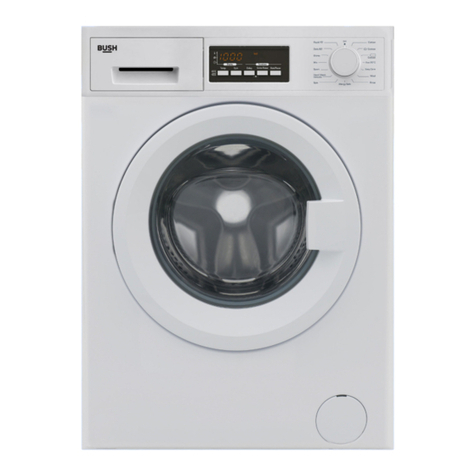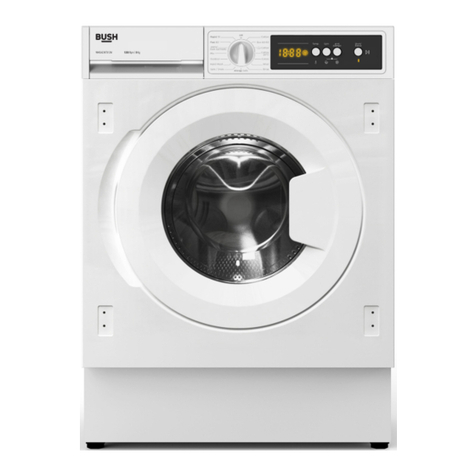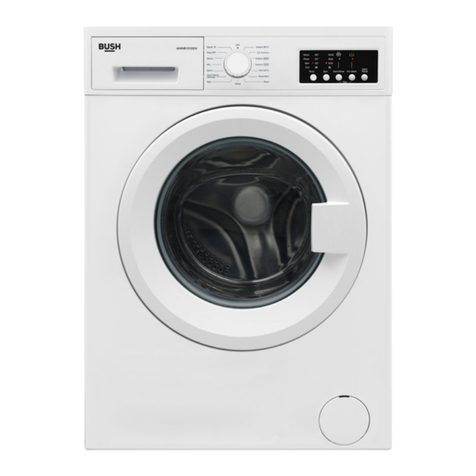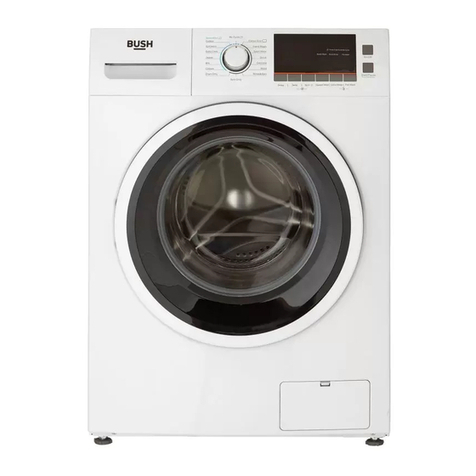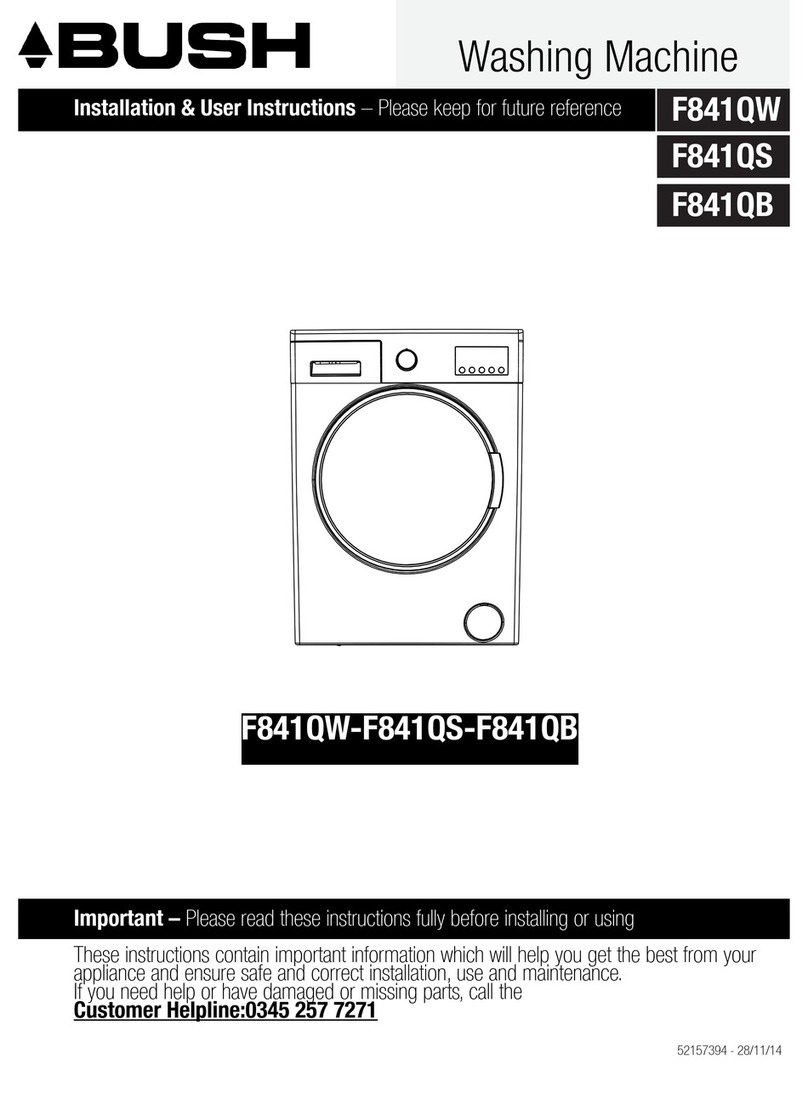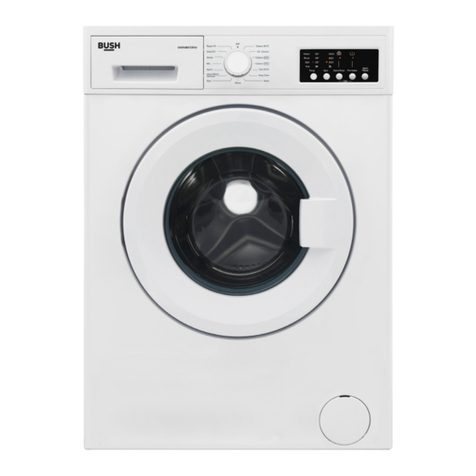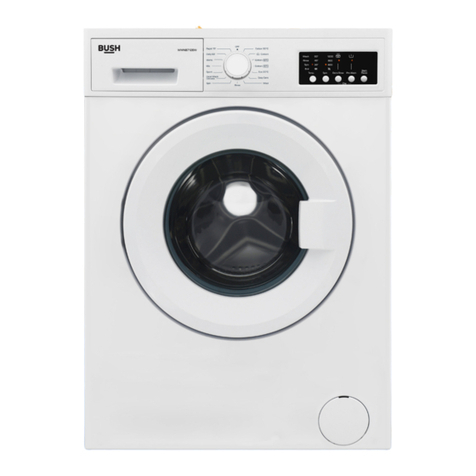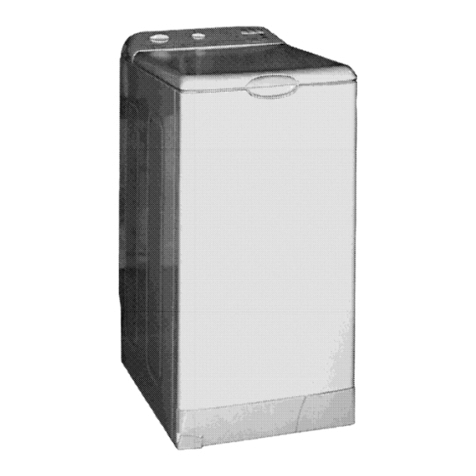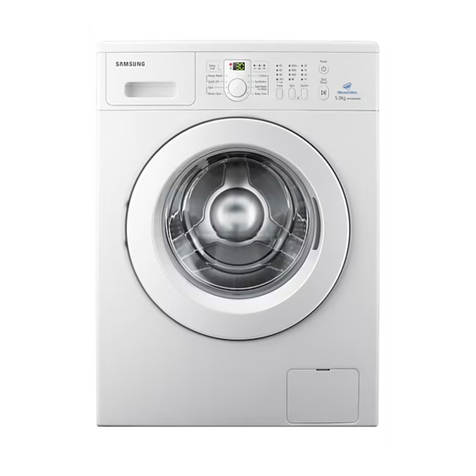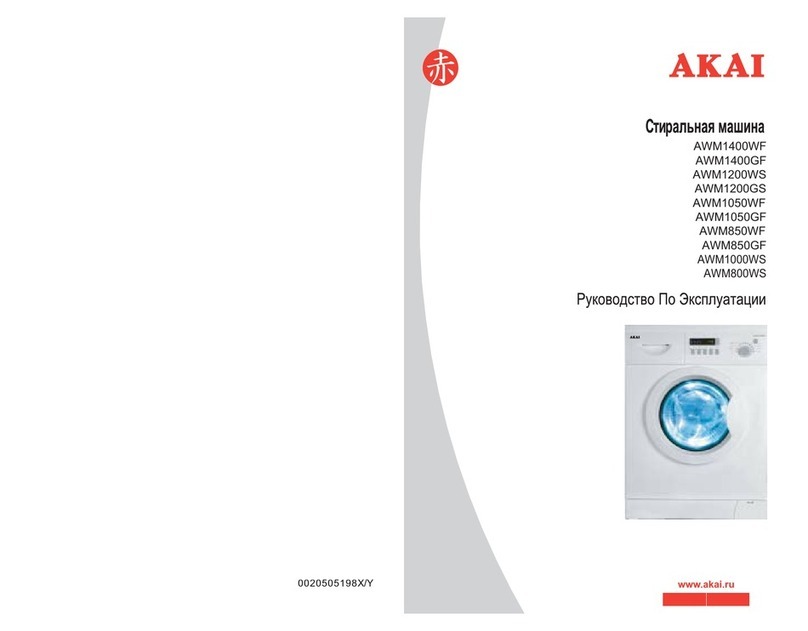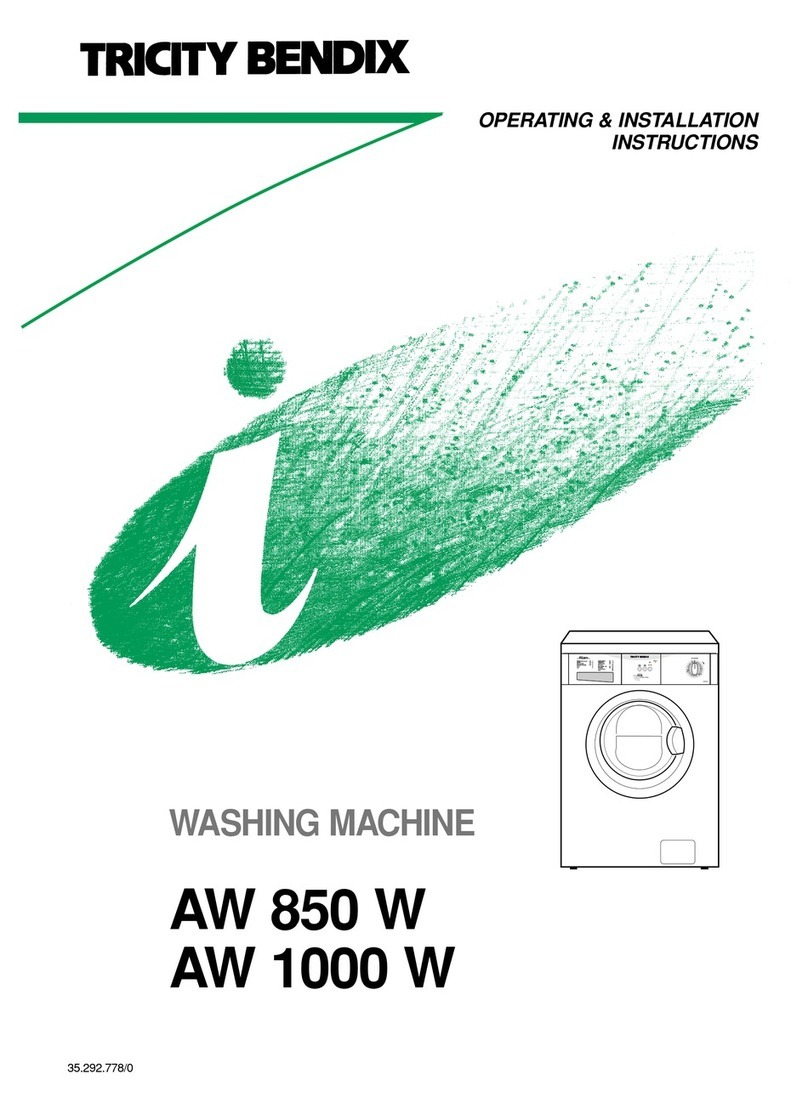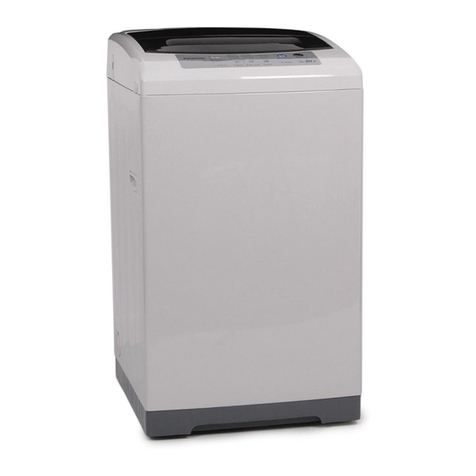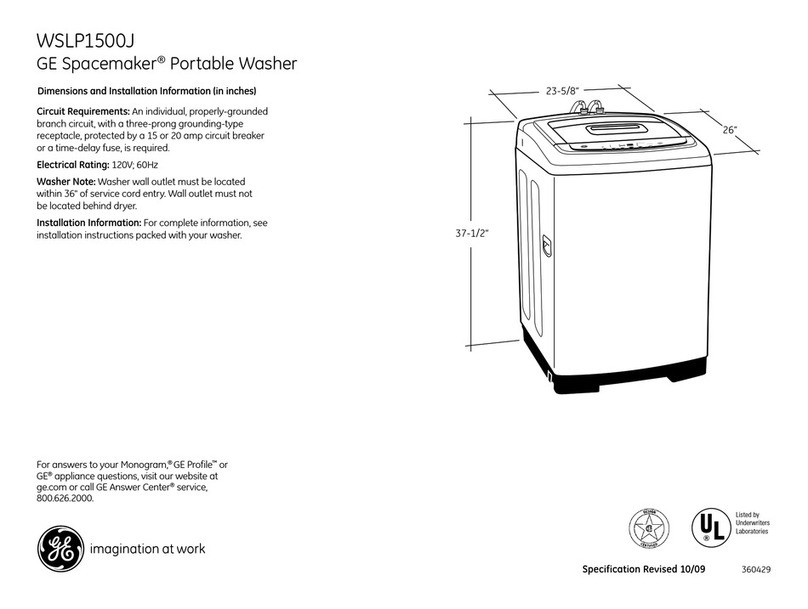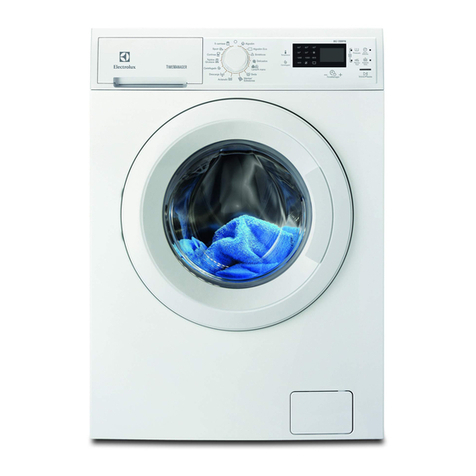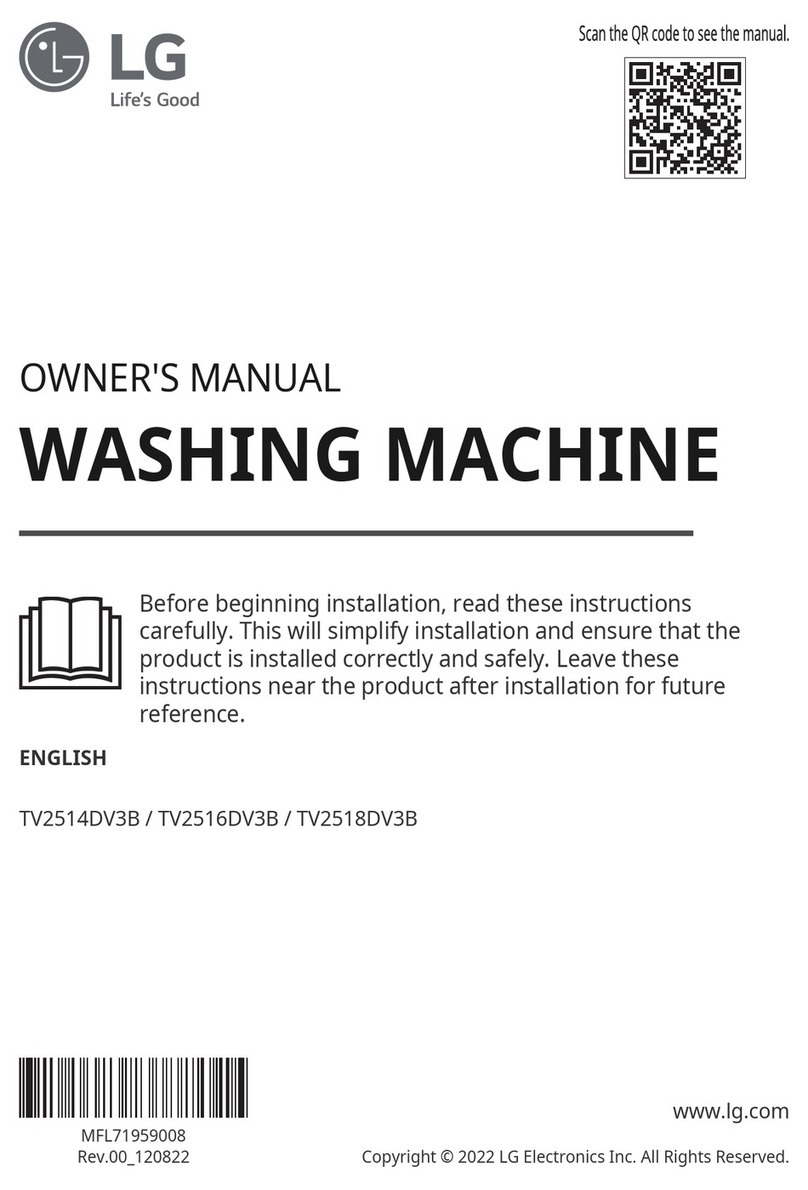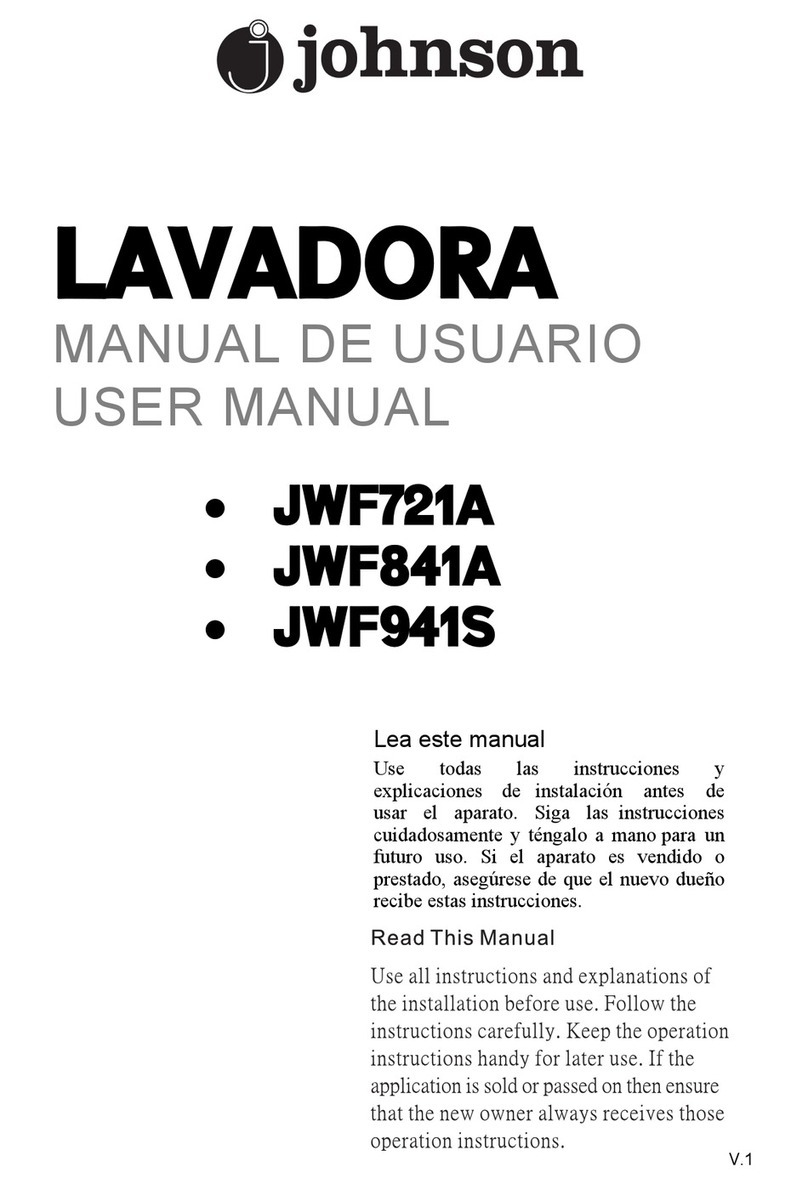•This appliance is not to be used by children or
persons with reduced physical, sensory or
mental capabilities, Persons with lack of
experience and knowledge.
•Do not use a multiple socket or extension
cord.
•Do not use if the power lead is damaged. It
must be replaced by the manufacturer, their
approved service agent or similarly qualified
person. Customer Helpline: 0845 600 4632.
•Do not insert the plug into the power supply
with wet hands.
•Do not touch or use the appliance when
barefoot or with wet or damp hands.
•Do not open the detergent drawer during a
wash cycle.
•Do not touch the porthole (door) during the
washing cycle - it will get hot.
•Never force the machine door open while the
machine is running.
•Do not open the door if water is visible
through the porthole.
•Do not wash foam rubber or sponge like
materials on a hot wash.
•The machine can reach high temperatures
while running. Do not touch the drain hose or
waste water during draining.
•Do not forget that the packing material of your
machine may be hazardous for children.
•Keep your pet away from your machine.
•Do not use flammable detergent, sprays or dry
cleaning agents in or near to the appliance.
•Do not remove or insert the plug in the
presence of flammable gas.
•The appliance should not be put on a carpet
which can block the air ventilation on the bottom
side.
•Do not place heavy objects or sources of heat
or damp on top of the washing machine.
•Only use detergents which are suitable for
automatic washing machines and follow the
detergent manufacturers recommendations.
•Do not use this appliance if there are any
missing or damaged parts.
•Do not attempt to repair the appliance
yourself. Contact the manufacturer, their
approved service agent or the Customer
Helpline: 0845 600 4632.
•The installation of this appliance is best
carried out by 2 people.
•Dispose of all packing carefully and
responsibly.
•This appliance is for indoor use only. Only
install in a dry indoor environment.
•The appliance MUST be positioned on a firm
level base.
•Do not position the appliance where it is
exposed to direct sunlight or heat sources as
this will age the plastic and rubber components.
•Warning: Ensure all 4 packing bolts have been
removed.
•Ensure the appliance is connected directly to
a domestic mains water supply.
•Warning: This washing machine MUST only
be connected to a cold water supply.
•Ensure all electrical connections are as stated
in this document.
•Ensure the appliance is plugged into a
separate earthed socket that is easily
accessible.
•Ensure the power lead is not trapped under
the appliance.
•Do not connect the appliance to the power
supply until installation is complete.
•This appliance is for domestic/household use
only and is not suitable for commercial use.
•Check that the water hose joints and
connections are secure and there are no leaks. If
the hoses leak, do not use until the leaks have
been stopped.
Before use
During use
2
